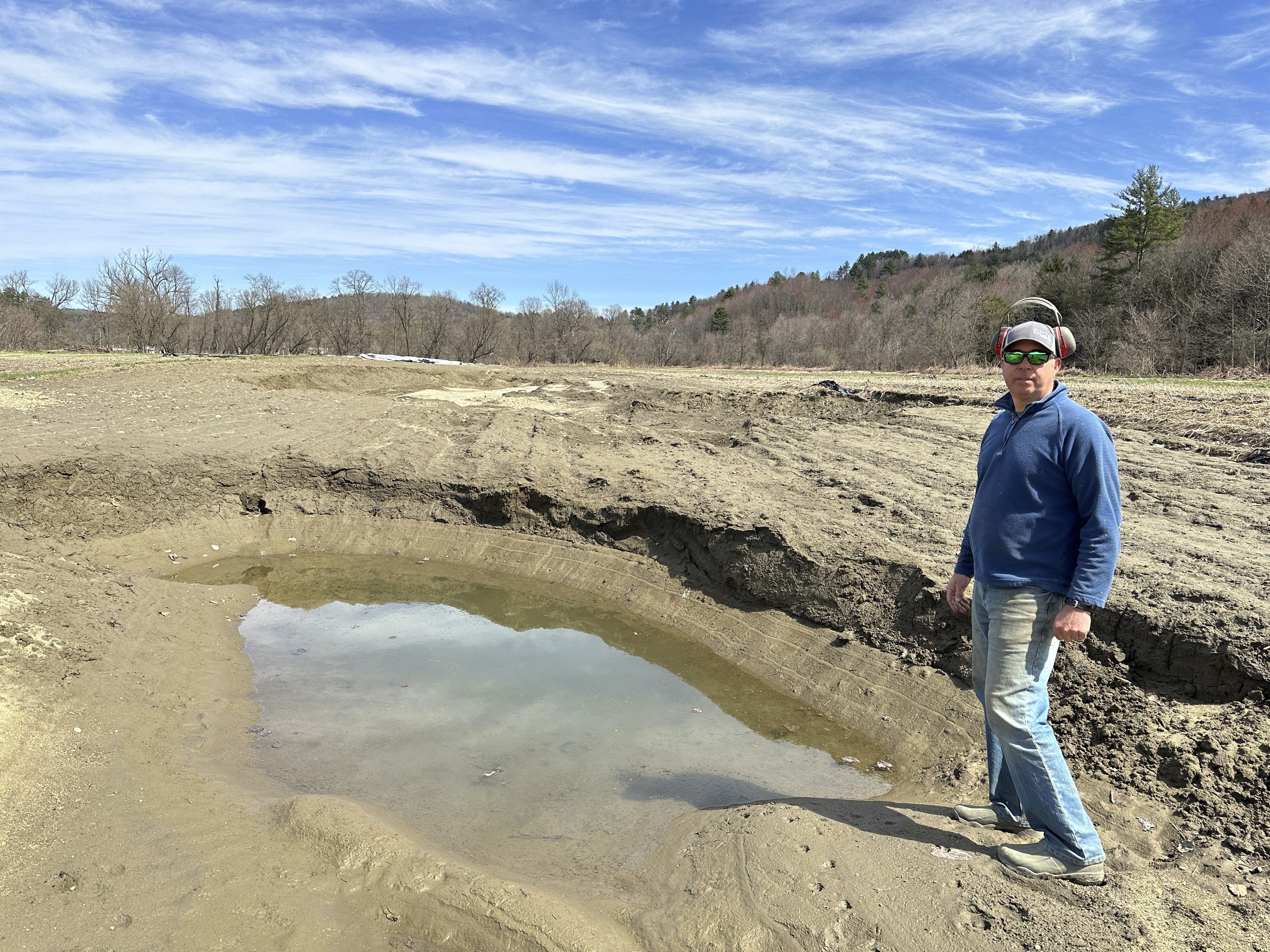The Vermont Fish and Wildlife Department is monitoring the site of a recent major fire as it works to assess its possible impacts on a state-endangered species.
The little brown bat is a species that has been in sharp decline in Vermont. A colony of little brown bats recently lost a key roosting site, when the historic covered bridge connecting Cornwall and Salisbury was destroyed September 10 in a massive blaze.
"It was a great home," small mammals biologist Alyssa Bennett said of the wooden one-lane bridge. "They were using all the tight crevices, it had good sun exposure, and access to a water source, which enabled them to forage for insects."
A recent study tallied approximately 180 of the struggling little brown bats inside the wooden covered bridge, Bennett said. However, she said it is likely most of those bats had moved onto a different area before the flames broke out, as they start preparing for the winter.
Bennett explained the animals tend to return to the same roosting site for generations. She added that in Cornwall, conservationists have preserved open space near the bridge and installed bat boxes to create additional habitat options for the animals.
Roughly 90 percent of Vermont's little brown bats suddenly died in 2009 from a mysterious fungal disease called white nose syndrome, Bennett said. It causes the animals to wake prematurely from their hibernation, when they could not find food, and weakens their bodies.
"It's a very fragile and vulnerable species," Bennett said of the little brown bat.
Vermont
The latest news from around the state
One witness to the fire reported to Bennett that she saw a bat zip from the flaming timbers of the bridge, only to drop to the ground. On recent surveys of the area around the bridge, Bennett said she has not found any dead bats.
Bats often elicit negative responses from people, but not near the buggy Otter Creek, said Cornwall resident Richard Isenberg.
"They have an important place in the ecosystem," he told necn. "There is no one who lives near the cedar swamp here who isn't grateful to have bats keeping down the mosquitoes."
Isenberg was glad to hear Bennett is finding more bats in conservation shelters near the bridge. She believes they are ones that used to roost in the bridge.
Bennett explained she and colleagues believe many of the little brown bats had already left the covered bridge for their fall and winter spots before the flames broke out. Caves and mines are a destination in the cooler months, as the bats look to start their hibernation.
The bats' departure from the bridge would have come after their babies learned to fly, Bennett pointed out.
"If this fire had happened in June or July, those bats certainly would've perished," Bennett said.
Long-term, Bennett plans to watch the land around the destroyed bridge to see if bats return. She said officials with the Vermont Agency of Transportation have pledged to soon start installing more houses to provide bats with extra habitat, trying to make up for what was lost.
Investigators with the Vermont State Police are still looking into the cause of the fire, spokesman Scott Waterman said.
The Vermont Fish and Wildlife Department has published information online to assist in conserving the state's fragile bat species. You can view it here.



